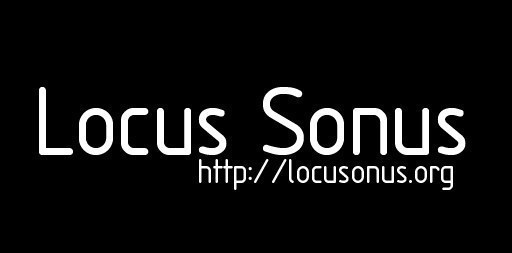|
symposium #7
mar2012
Auditoriums Internet / Internet Auditoriums
LOCUS SONUS audio in art
http://locusonus.org/
http://www.ecole-art-aix.fr/
http://www.ensa-bourges.fr/
LAMES MMSH Sociology Research Lab - University of Provence
http://lames.mmsh.univ-aix.fr/
24 & 25 march 2012
9am to 6pm
École Nationale Supérieure d'Architecture de Nantes
-- (School of Architecture of Nantes)
http://www.nantes.archi.fr/
24 march 2012
9pm, free entrance
Le Lieu Unique
in collaboration with LOCUS SOLUS, Rare music & Invented instruments
on the 17th and 18th of March, 2012, website.
http://www.lelieuunique.com/
ensa école nationale supérieure d'architecture nantes / school of architecture nantes
lieu unique
école supérieure d'art d'aix en provence / school of arts aix en provence
école nationale supérieure d'art de bourges / school of arts bourges
lames laboratoire de sociologie mmsh cnrs umr 7305 université de provence / sociology research lab university of provence
accord-cadre cnrs / ministère de la culture / cnrs research agency & french ministry of culture
ministère de la culture et de la communication / french ministry of culture
partnerships :
université laval québec / laval university quebec (ca)
crisap creative research into soundart practices, lcc, university of the arts london (uk)
rpi rensselaer polytechnic institute university of troy ny (us)
saic school of the art institute of chicago (us)
deutschlandradio kultur klangkunst berlin (de)
emerge experimental media research group bournemouth university (uk)
faculty of music oxford university (uk)
and
gersa groupe d'étude et de recherche scénologique en architecture ensa nantes / research group on theater & architecture studies (f)
laua langages actions urbaines altérités ensa nantes / research group on languages, urban actions & othernesses (f)
apo33 nantes (f)
|
menu
|
participants
| |
|
Jérôme Joy
 |
Les Auditoriums Internet
(The Internet Auditoriums)
Abstract :
Les réseaux électroniques (Internet) sont un des seuls environnements qui permettent à la fois l’interaction sonore en temps réel et la connexion télématique en direct entre des lieux et des acoustiques, en influençant immanquablement notre perception du temps et de l’espace. Ainsi l’Internet est devenu un support des “auditoriums”, parmi tous les autres lieux sociaux de l’écoute. Nous pouvons questionner aujourd’hui les natures et les spécificités de ces “auditoriums Internet” en relation avec les pratiques de l’écoute à distance liées à la combinaison et à l’intrication d’espaces et de flux sonores locaux et distants. Les enjeux que veut discerner et étudier cette recherche inédite sur les auditoriums Internet concernent tout autant les dimensions innovantes artistiques, technologiques, industrielles et commerciales, que celles sociologiques et anthropologiques. Mon principal objectif est l’étude des auditoriums Internet et la distinction de l’écoute à distance comme un nouveau paradigme des régimes sonores essentiel voire constitutif dans les environnements sonores en réseau et dans les systèmes de la télémusique.
back to programme — back to participants
Jérôme Joy is a composer and networks artist who has been teaching at the National School of Arts, Villa Arson Nice (1992-2010), and since 2010 at the National School of Arts of Bourges. Since 2004 he's research director with Peter Sinclair of the research group Locus Sonus - Audio in Art. Having delivered multiple performances of both instrumental and electro-acoustic music since the early 1980s, he has devised numerous international networked projects and collectives (in music, sound and net) since 1995. His interests encompass the vast realm of sound composition, alighting upon and inspired by electronic production, programming technologies, networked systems, shared databases and the interplay and local gaps of narration into our daily life and social contexts. He's continuously working on various projects of network music (Sobralasolas !, nocinema, picNIC, Collective JukeBox, Disklavier, etc.) and of instrumental, electroacoustic and electronic music. He has regularly participated to various international conferences : Imagina 1997, Invencao 1998, ISEA 2002, ICMC 2008, etc.
He is currently working on investigations about extended music (acoustic, electroacoustic, telemusic, netmusic) and its correlated organology (from instruments and apparatuses, to systems, interfaces and networks). — such as for instance the exploration of the soniferous state of networks centred on listening experiences and ‘manufactures’. His work is rooted in the practice of live composition developed as a sonic & ‘social’ exploration of time-specific and site-specific public ‘situations’ while investigating electronic production, electro-acoustic music, noise & harsh noise music, field recording & improvisation & radiophonic works, programming & streaming technologies, performed & networked systems, online shared databases & sound/music collectives, and netmusic (telemusic). He is currently PhD researcher at the Laval University in Québec (title of his research : Internet Auditoriums) and developed with Locus Sonus the programme and ongoing online database NMSAT - Network Music and SoundArt Timeline.
Compositeur et artiste-enseignant à l'École Nationale Supérieure d'Art de Nice Villa Arson de 1992 à 2010, et depuis 2010 à l'École Nationale Supérieure d'Art de Bourges, Jérôme Joy coordonne le laboratoire de recherche postdiplôme Locus Sonus audio in art avec Peter Sinclair et Anne Roquigny. Après un parcours de performances et de concerts instrumentaux et électroacoustiques à partir de 1982, il développe depuis 1995 de nombreux projets en réseau (concerts, database sonore participative, musique électronique, radiophonie, cinéma et performances). Ses projets et concerts de musique instrumentale, électronique et électroacoustique, personnels ou en collectif, sont présentés dans de nombreux festivals, colloques et événements internationaux. Ses dernières réalisations sont tournées vers la musique instrumentale et électronique, vers les réseaux et la radiophonie, et plus spécialement vers les concerts de musique en réseau (Collective JukeBox, picNIC, nocinema.org, PacJap, pizMO, Lib_, Disklavier, Sobralasolas ! -). Il a participé à de nombreux colloques et conférences internationales (Imagina 1997, Invencao 1998, ISEA 2002, ICMC 2008, etc.).
Il est actuellement doctorant à l'Université Laval Québec (sujet de recherche : Les Auditoriums Internet) et développe au sein de Locus Sonus le programme et base de données NMSAT - Historique de l'art sonore et de la musique en réseau.
Publications récentes / recent writings :
- Joy J., Sinclair P. (2008). Networked Sonic Spaces (Les Espaces Sonores en Réseau). In GlobalWare Corporation (Ed.) Roots/Routes, International Computer Music Conference ICMC’08 (Panel : Networking Performance) (pp. 553-555). Belfast : SARC, Sonic Art Research Center, Queens University, & International Computer Music Association ICMA (Publishers).
- Joy J., Sinclair P. (2009). Espaces Sonores en Réseau - pratiques de la recherche en art, Locus Sonus. In "Recherche & Création - Art, Technologie, Pédagogie, Innovation", sous la direction de Samuel Bianchini, (pp. 122-139). Paris: Éditions Burozoïque / Les Éditions du Parc, École Nationale Supérieure d’Art de Nancy, 2009.
- Joy J., Sinclair P. (2009). Networked Music & Soundart Timeline (NMSAT): A Panoramic View of Practices and Techniques Related to Sound Transmission and Distance Listening. In Contemporary Music Review, "Network Performance", Vol. 28, Nos 4/5, (pp. 351-361), Taylor & Francis Group, Oxford: Routledge (UK), 2009.
- Joy J. (2009). Networked Music & Soundart Timeline (NMSAT) Excerpts of Part One: Ancient and Modern History, Anticipatory Literature, and Technical Developments References. In revue Contemporary Music Review, "Network Performance", Vol. 28, Nos 4/5, (pp. 449-490), Taylor & Francis Group, Oxford: Routledge (UK), 2009.
- Joy J. (2010). Une Époque Circuitée ― Réflexion sur l'organologie des arts en réseau : le passage de l'Internet à un état musical. In Revue Intermédialités - Histoire et Théorie des Arts, Lettres et des Techniques - April, 2010, No. 13 - Programmer, (pp. 57-76), CRI, Centre de Recherche sur L'Intermédialité, Université de Montréal (QC), 2010.
- Joy J. (2010). La Musique Étendue - « En Plein Air » (Extended Music - Out in the Open). French, English and Chinese versions. In Around, catalog of the sound festival, (pp. 104-149), Transl. by Celine Cruickshanks. Edited by Yang Yeung, Soundpocket, Hong Kong (HK), 2010.
- Joy J. (2011). What NMSAT says about Sonification. In AI & Society : Knowledge, Culture and Communication, Proceedings of Locus Sonus Symposium : Sonification, Guest editor Locus Sonus, Volume 27:2, 2011. London : Springer (Pub.). (en cours de publication)
|
| |
--> http://jeromejoy.org
--> http://nocinema.org
--> http://locusonus.org/
|
| |
|
Julien Clauss
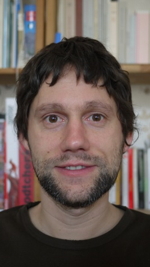 |
Modulations, un auditorium en plein air
(Modulations, an "out in the open" auditorium)
Abstract :
Durant deux étés, un mini studio de radio a été installé en plein air sur les plateaux du Vercors. Des artistes sonores, auteurs, musiciens ou performeurs se sont succédés à l'antenne pendant 24 heures. Invité à venir bivouaquer avec une radio portable, le public est disséminé dans le paysage pour écouter les différentes propositions. Le dispositif imbrique l'écoute et la vie en montagne. Il met en jeu différentes singularités : mobilité du public, auto-organisation de la diffusion sonore, rapport au paysage.
back to programme — back to participants
Julien Clauss, artiste français (1974), vit à Bordeaux.
Il a étudié la musique, la mécanique physique et l’acoustique. Il développe un travail sculptural qui mobilise le corps et oriente la perception par le mouvement. Ses oeuvres dessinent ou déréalisent des territoires sous forme de sculptures de sons, de performances ou de dispositifs embarqués sur le corps des spectateurs. Elles s'inscrivent spécifiquement dans les sites ou dans l'espace publique. Sous les titres génériques Bulles et Modulations, il organise des événements de musique expérimentale de 24 heures dans des lieux atypiques : pont autoroutier, lac, sites en montagne, terrain de foot...
Il a créé les installations audio-tactiles "Pause" et "Stimuline" ainsi que le projet "Immunsystem" avec Lynn Pook, a assisté Pierre Henry de 2001 à 2007 lors de ses concerts et a intégré le laboratoire d'art audio Locus Sonus en 2007. Depuis 2005, son travail est régulièrement présenté dans des galeries et des festivals de nouveaux média.
Il débute actuellement un projet de recherche à l'IMéRA (institut méditerranéen de recherche avancée) sur la distorsion du schéma corporel par stimulation tactile et sonore en collaboration avec le laboratoire de neurobiologie de la cognition du CNRS et de l'université d' Aix-Marseille.
|
| |
--> http://www.cycliq.org
|
| |
|
Marcus Gammel
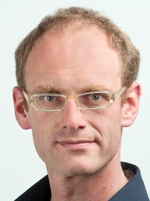 |
The media's blind spot: Who is listeníng any way?
Abstract :
Every medium creates its own narrative on how it is being received. So-called empirical research on user behaviour rarely reflects more than the way how media makers question their own activity. In response to exemplary historical and current listener typologies, we suggest to tackle the problem the active way: An assembly kit for the perfect listening life form.
back to programme — back to participants
Marcus Gammel, born 1975 in Bremen / Germany, studied musicology, German literature and philosophy at Humboldt University Berlin, Université Paris IV and New York University. He has worked extensively as music journalist, theatre dramaturge and radio maker. Prix Phonurgia Nova 2005 and Prix Marulic 2008 for the documentary "Europas Wahn" (with Viktoria Tkaczyk).
Since 2009, Marcus Gammel is directing the sound art programme at Deutschlandradio Kultur.
|
| |
--> http://www.dradio.de/dkultur/sendungen/klangkunst/
|
| |
|
Katrin Moll
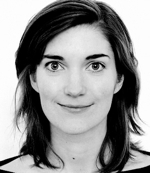 |
RADIOORTUNG - Mobile Narratives in Public Space
Abstract :
RADIOORTUNG – Hörspiele für Selbstläufer’ is a new site-specific radio format for mobile phones produced by Deutschlandradio Kultur. Three different radio dramas and/or radio documentaries have been created for this format, performed between summer 2010 and autumn 2011 in Berlin and Cologne. The mobile narratives can be located via GPS-Mobile and the listener is composing his or her personal radio piece by moving through the city. The website www.dradio-ortung.de also allows you to take a virtual walk through the radio projects.
back to programme — back to participants
Born 1973 in Berlin/Germany. Katrin Moll studied sound and dramaturgy at the Film and Television Academy in Potsdam-Babelsberg (HFF) and specialized in documentary narratology and aesthetics. Since 1999 she has been working as an author and director for radio documentary and radio drama, since 2006 she has also been working as an editor and programmer for Deutschlandradio Kultur.
In 2009 she developed the new crossmedia radio format "RADIOORTUNG - Hörspiele für Selbstläufer". Her particular interest is the connection of aesthetic and technical means to create new forms of narrative storytelling.
|
| |
--> http://www.dradio-ortung.de/
|
| |
|
Marilou Polymeropoulou
 |
The Chip Music Internet Auditorium: Everyday Listening Practices in an Online Music Community
Abstract :
Chip music is a form of electronic music produced by repurposed and manipulated retro video game consoles. Its sound is often referred to as “8 bit” reflecting the technology of the chip of the sound generating machine (for example a Nintendo Game Boy). This online community of musicians was the first to distribute their music for free via the Internet. More specifically, chip musicians have the opportunity to upload their music on community fora or Netlabels such as 8 bit collective, micromusic.net and noisechannel.org. In this panel I will present a concise cultural history of chip music, as the offspring of hacker culture and the avant garde; I will also briefly discuss the technology used in the production of chip music. My focal point will be the chip music Internet Auditorium: the listening practices from the offline production to the online consumption of music. Drawing parallels with previous scholarship on the sociology and ethnomusicology of music and listening, I will explain how the Internet affects listening practices. I will mostly use examples derived from online ethnographic fieldwork with the community focussing on the dialectics of the several community fora, Netlabels, YouTube, Soundcloud, podcasting, and online broadcasting of performances, discussing the transient character of the Internet Auditorium.
back to programme — back to participants
Marilou Polymeropoulou is a technoaesthetic ethnomusicologist. She has graduated from the National and Kapodistrian University of Athens (BA in Music Studies; MA in Music, Culture, and Communication) and University College London (MA in Material and Visual Culture). Currently she is a doctoral student at the Faculty of Music, University of Oxford. Her project, funded by the Greek State Scholarships Foundation, centres on the subject of chip music and its European community: identity, creativity and aesthetics. Marilou is in the student committee of the Royal Musical Association, a part-time lecturer at the Department for Continuing Education (University of Oxford), a dark-pop composer, and a some-time music journalist.
|
| |
--> http://mariloup.wordpress.com/
|
| |
|
Bruno Suner
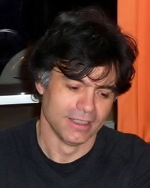 |
Formes et évolutions de l’auditorium de concert
(History of the Concert Hall)
Abstract :
L’auditorium de concert émerge progressivement du salon de musique princier, et de la cohabitation avec la salle de bal au fur et à mesure que se structure et se stabilise les formations orchestrales. Après une inflation des effectifs orchestraux et du public, la salle de concert philharmonique se stabilise et se constitue à la fin du XIXème siècle, en un type à part entière, plutôt ancré dans les pays anglo-saxons. En France, le concert doit toujours composer avec le théâtre ou le lyrique, se frayer un chemin dans des salles plutôt dédié à la parole. La musique contemporaine vient perturber ou interroger cette donne. Elle investit parfois pour ce faire des lieux moins institutionnalisés. On essaiera de baliser les rares auditoria qui intègrent ces nouvelles distributions spatiales en développant en premier lieu l’équipement de la villette (la salle de la cité de la musique) et en rappelant sa genèse notamment en abordant le positionnement de I. Xenakis avec son parcours particulier (Polytopes) qui le mène à une proposition propre pour le concours de la cité de la musique.
back to programme — back to participants
Bruno Suner a poursuivi une formation d'ingénieur acousticien au Conservatoire National des Arts et Métiers en parallèle de ses études d'architecte à Paris. Il complète cette formation par un doctorat en Histoire des techniques consacré aux lieux de spectacle. De 1985 à 1989, il associe ses collaborations avec plusieurs revues de la presse architecturale sur le thème de l'acoustique, au conseil acoustique, qu'il pratique successivement au sein d'un cabinet (1987-1989), puis en libéral (1992-1995) et enfin, en association, au sein du BET ALTIA qu'il fonde avec R. Denayrou (1996-Présent). En 1995, il crée la société Euphonia pour valoriser les savoir-faire et outils développés dans l'acoustique architecturale dans d'autres domaines d'applications de l'acoustique virtuelle. Il assure également un enseignement de l'acoustique et des techniques de simulation numérique dans différents établissements d'enseignement supérieur (ENSATT, ENSAN, EMN, ...)
.
Enseignant à l'Ecole Nationale Supérieure d'Architecture de Nantes depuis 1994, il est associé aux travaux de recherche du GERSA au sein du département Scénographie.
|
| |
--> http://gersa.nantes.archi.fr/
|
| |
|
Alain Renaud
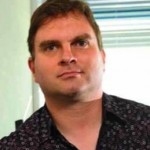 |
Interacting over distributed spaces; context, challenges and applications
Abstract :
The field of network music performance (NMP) was a precursor of real time networked interactions across a multiplicity of spaces. NMP, because of stringent latency requirements and very specific requirements in terms of audio quality led to the realisation that connecting physical spaces with a network represents many challenges. Indeed, real physical spaces with specific acoustic behaviours and environmental features are instantly meshed together into a combined space. Strategies to manage networked spaces need to be evaluated and implemented. The presentation examines various scenarios issued from practice based research in NMP and explores how the experience gained in the discipline can be used and implemented into fields beyond networked music.
back to programme — back to participants
Trained as a sound engineer in the US, Alain Renaud initially worked in the music industry in several functions prior to joining Rightscom, a London-‐based digital consultancy, as head of research and consultant, in 2001. In 2005, he received a grant from the Arts and Humanities Research Council (AHRC/UK) at the Sonic Arts Research Centre, Belfast that enabled him to enter the academia and undertake PhD studies in music technology. Subsequently, he moved to Bournemouth, UK in 2009 to take an academic position in Music and Audio Technology at Bournemouth University, where he is now a senior lecturer. Parallely, he was also a visiting scholar at Stanford University in 2007 at the Center for Computer Research in Music and Acoustics (CCRMA) and held several artistic/technical residencies including an audio residency at the Banff Centre in 2009. He was a regular audio specialist for the Montreux Jazz Festival in Switzerland from 2000 to 2010. Alain's research focuses on the development of networked music performance systems with an emphasis on the creation of strategies to interact over a network musically and the notion of shared networked acoustic spaces. He performs regularly over the network with the NetVs.Net collective and the Jackson4s.
Initialement formé comme ingénieur du son aux Etats-‐Unis, Alain Renaud a occupé plusieurs fonctions dans l’industrie de la musique avant de rejoindre, en 2001, Rightscom à Londres en tant que consultant et chef du département de recherche. En 2005, Alain a reçu une bourse d’études du Arts and Humanities Research Council (AHRC/UK) pour mener une recherche dans les technologies musicales au Sonic Arts Research Centre (SARC) à Belfast, qui a abouti à l’obtention d’un doctorat en 2009. Depuis 2009, Alain est professeur assistant à l’Université de Bournemouth. Une partie de sa recherche de doctorat a été effectuée au Center for Computer Research in Music and Acoustics (CCRMA) à l’Université de Stanford en 2007. Alain a aussi occupé plusieurs postes en tant que chercheur en résidence, notamment au Banff Centre en 2009 et a travaillé en tant que spécialiste audio au Montreux Jazz Festival de 2000 a 2010. Sa recherche et ses activités concernent l’utilisation des réseaux à très haut debit comme vecteur pour le développement de performances en temps réel dans plusieurs espaces physiques. Il joue régulièrement en tant que performeur dans les projets et collectifs en réseau NetVs.Net et les Jackson4s.
|
| |
--> http://alainrenaud.net/
--> http://www.bournemouth.ac.uk/imcr/emerge/
|
| |
|
Bill Fontana
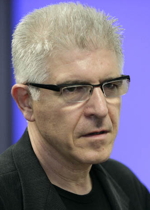 |
The Act of Listening as a way of Making Music
Abstract :
How I translate this into making sculptures that are listening. Field recording and live sound sculpture has been my medium to explore this.
back to programme — back to participants
Bill Fontana (born in Cleveland, Ohio, April 25, 1947) is known internationally for his pioneering experiments in sound art.
Fontana attended New School for Social Research in New York and studied both music and philosophy. He traveled to Australia, and also stayed in Japan and Germany composing. Fontana began making sound sculptures in 1976. In a career spanning 30 years, Fontana’s sound sculptures use the urban environment as a living source of musical information, all with the potential to conjure up visual imagery in the mind of the listener. SInce the early 70’s Fontana has used sound as a sculptural medium to interact with and transform our perceptions of visual and architectural spaces. He has realized sound sculptures and radio projects for museums and broadcast organizations around the world. His work has been exhibited at the Whitney Museum of American Art, the San Francisco Museum of Modern Art, the Museum Ludwig, Cologne, the Post Museum in Frankfurt, the Art History and Natural History Museums in Vienna, both Tate Modern and Tate Britain in London, the 48th Venice Biennale, the National Gallery of Victoria in Melbourne, the Art Gallery of NSE in Sydney and the new Kolumba Museum in Cologne. He has done major radio sound art projects for the BBC, the European Broadcast Union, the Australian Broadcasting Corporation, National Public Radio, West German Radio (WDR), Swedish Radio, Radio France and the Austrian State Radio. Some of his more famous works include Distant Trains, Satellite Ear Bridge Cologne-San Francisco, Journey Through My Sound Sculptures, The Sound of an Unblown Flute, and Panoramic Echoes.
|
| |
--> http://www.resoundings.org/
|
| |
|
Pauline Oliveros
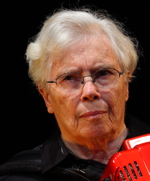 |
Stretched Boundaries — Connecting Across Abilities, Networks and Practices
Abstract :
This report is on my participation in the Vancouver Forum January 21, 2012. My participation took place from Venice Italy via SKYPE and Second Life. I spoke to the Vancouver Forum via SKYPE about our Adaptive Use Musical Instruments (AUMI) project at Deep Listening Institute (DLI). I conducted and performed with the Avatar Orchestra Metaverse (AOM) in Second Life with participants in Real Life at Vancouver Forum, Simon Fraser University with one group performing AUMI software interface and another group of improvisers performing acoustic & electronic instruments.. The three groups AOM, AUMI & Improvisers were coordinated by my score - Vancouver Calling - that I conducted via text messages. Two of my colleagues from DLI performed AUMI via SKYPE from Kingston NY. Real life was streamed into Second Life and vice versa. All the performers saw one another on all platforms and the text cues for the score.
back to programme — back to participants
"Through Pauline Oliveros and Deep Listening I finally know what harmony is....
It's about the pleasure of making music." John Cage 1989
Pauline Oliveros, composer, performer and humanitarian is an important pioneer in American Music. Acclaimed internationally, for four decades she has explored sound -- forging new ground for herself and others.
Through improvisation, electronic music, ritual, teaching and meditation she has created a body of work with such breadth of vision that it profoundly effects those who experience it and eludes many who try to write about it. "On some level, music, sound consciousness and religion are all one, and she would seem to be very close to that level." John Rockwell Oliveros has been honored with awards, grants and concerts internationally. Whether performing at the John F. Kennedy Center in Washington D.C., in an underground cavern, or in the studios of West German Radio, Oliveros' commitment to interaction with the moment is unchanged. She can make the sound of a sweeping siren into another instrument of the ensemble.
Through Deep Listening Pieces and earlier Sonic Meditations Oliveros introduced the concept of incorporating all environmental sounds into musical performance. To make a pleasurable experience of this requires focused concentration, skilled musicianship and strong improvisational skills, which are the hallmarks of Oliveros' form. In performance Oliveros uses an accordion which has been re-tuned in two different systems of her just intonation in addition to electronics to alter the sound of the accordion and to explore the individual characteristics of each room. (Tuning Chart)
Pauline Oliveros has built a loyal following through her concerts, recordings, publications and musical compositions that she has written for soloists and ensembles in music, dance, theater and interarts companies. She has also provided leadership within the music community from her early years as the first Director of the Center for Contemporary Music (formerly the Tape Music Center at Mills), director of the Center for Music Experiment during her 14 year tenure as professor of music at the University of California at San Diego to acting in an advisory capacity for organizations such as The National Endowment for the Arts, The New York State Council for the Arts, and many private foundations. She now serves as Distinguished Research Professor of Music at Rensselaer Polytechnic Institute and Darius Milhaud Composer in Residence at Mills College. Oliveros has been vocal about representing the needs of individual artists, about the need for diversity and experimentation in the arts, and promoting cooperation and good will among people.
|
| |
--> http://paulineoliveros.us/
--> http://deeplistening.org/
|
documentation and
Photos: Locus Sonus lab and all.
|
